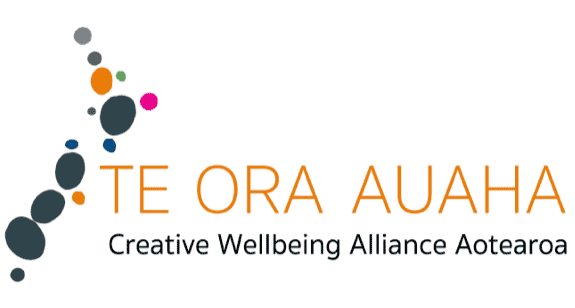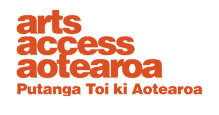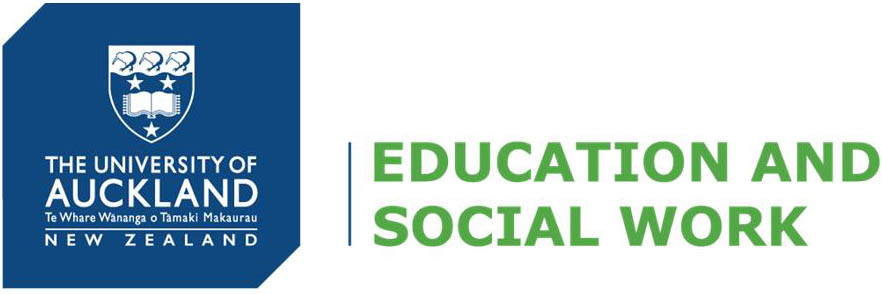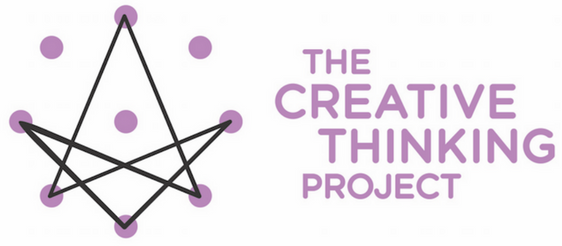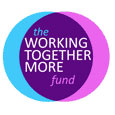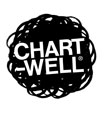Celebrating Everyday Creativity (and asking what change needs to happen for the full value of the arts to be understood and activated?)

By Amber Walls
Over the past few weeks during an unprecedented global pandemic the arts have made a profound contribution to our wellbeing. In our homes, garden sheds, workplaces and neighbourhoods, they have helped us to laugh, cry, make sense of our experience, cope with isolation and anxiety, and mobilise vital community support networks. A good deal has been written about this, but not so much has been written about the kind of arts that have flourished and supported our wellbeing on such a global scale. Everyday Creativity, a ridiculously inventive mash-up of high-brow and low-brow culture, was embraced by people from all backgrounds and continuously evolved through the exchange of ideas between creative practitioners, organisations and everyday ‘artists’.
Watching the last few weeks unfold has felt like a creative revolution as well as a revelation, prompting deep reflection. If the arts are such a potent force in our everyday wellbeing then why have we struggled so far to articulate their value? Do we need to develop a broader definition of the arts and the role they play in society? And if we are to activate their full potential in COVID-19 recovery, then where should our focus lie?
I revisit these questions in the final section, but firstly I'd like to showcase and reflect on some of the brilliant gems of creativity lighting up our lives over the last few weeks. I especially highlight the energies and activism of young people and organisations who support some of our most vulnerable communities. The featured case studies in the newsletter look at some of these in a little more detail.
Activating our ‘magical art brains’
“It's been really fun to get lost in my magical brain art world and disconnect from the fact we're in this weird lockdown. Art has been an absolute saviour during the lockdown. I don't know what else I could possibly be doing”. (Young participant, Otautahi Creative Space)
In times of crisis people activate their ‘magical art brain’.

It started with the now iconic footage in the media of Italians in isolation singing and playing music from their balconies and within days social media platforms were awash with videos of people across the globe singing, firstly to the Italians in a show of solidarity and care, and later with neighbours, friends family as city after city shut down. In Aotearoa, whole streets gathered as a daily ritual to perform Waiata and students isolated in high-rise flats shared a song from their window. Meanwhile videos abounded on social media of nurses in China, healthcare staff in Alaska, a dance crew in Geneva, and policemen in India teaching us handwashing techniques, and sometimes just dancing for sheer relief from their work in a multitude of other locations across the globe. Indigenous artists in Australia created dot paintings to share important COVID-19 public health messages.
The scenes marked the gravity of the unfolding situation and articulated a powerful sense of optimism, resilience and reassurance. As everything else shut down, the arts were mobilised with what looked from the outside like apparent ease. Over the past few weeks, the relationship between the arts, creativity and wellbeing has been sharply revealed, alongside evidence of how deeply embedded and valued the arts are in our everyday lives. Music, theatre, poetry, storytelling, visual arts, music and dance, exhibitions and workshops, gigs, DJ sets, dance parties, and virtual tours of museums, galleries and heritage institutions have been live-streamed straight into our bubbles, and delivered physically to our homes, opening doors to the arts in new ways.
The BBC TV’s Get Creative Campaign featuring ‘creative ways to support wellbeing for all ages’ declared that no idea is too silly. It invited us to start the day with a daily zoom Laughter Club, sing our hearts out with strangers in the RockChoir, and enter our art to be showcased at celebrity artist Grayson Perry’s Artclub. We are invited to upload our unique homemade Shakespeare mojo (think speeches, pictures, cakes) to Instagram, Twitter or Youtube to join a gigantic celebration of Shakespeare’s Birthday.
In parallel with this, the invitation to perform online alongside professional musicians, join global couch choirs to sing David Bowie’s ‘Heroes’ with strangers and carry out daily Create to Connect challenges posted on social media by 64 Million Artists has been embraced en masse. Arts Hub Australia launched creative online activity and resources for children. Do It (Australia) posted instructions from artists, and invited people to enter a new world and make an artwork of their own. New South Wales Art Gallery launched Together in Art for people who love making art to be together (even when they are apart).
The exchange was two-way. Social media and our TV sets were awash with a hilarious and inspired daily sharing of MOJO moments, dancing videos, and homemade quarantine creations. TVNZ’s national mum dancing and dad dancing video competitions were overwhelmed with videos of mojo dance moments, some accompanied by carefully crafted stage sets, costumes, and even an ingenious COVID disco ball.
 Recognising that online platforms are not accessible to some of our most marginalised communities, and that some art is quite simply better in person, some organisations found safe socially distanced approaches. When their venue closed, Te Pou Theatre went mobile and invited us to book our very own 10 minute Front Yard Festival performance on our doorstep. The brilliant Caluzzi Cabaret also went mobile and delivered their famous Drag Queen entertainment, freshly baked cupcakes and much needed laughter straight to our doors.
Recognising that online platforms are not accessible to some of our most marginalised communities, and that some art is quite simply better in person, some organisations found safe socially distanced approaches. When their venue closed, Te Pou Theatre went mobile and invited us to book our very own 10 minute Front Yard Festival performance on our doorstep. The brilliant Caluzzi Cabaret also went mobile and delivered their famous Drag Queen entertainment, freshly baked cupcakes and much needed laughter straight to our doors.
Residents in Auckland brought fun to their neighbourhood by upcycling local bus stops into creative oasis. Building on their weekly lunch time moodshifts (surprise pop-up events designed to brighten up our day), Gapfiller invited us to activate our front porch (or balcony, yard or driveway) as part of the new international Porch Placemaking week. 
The team at Fun Palaces continued to support community-led Tiny Revolutions of Connection in the most unexpected places in neighbourhoods across the UK. Meanwhile, neighbours in a UK town launched a back garden gigs movement, supporting socially distanced connection and wellbeing through music performances over the fence.
Organisations who work with some of the most marginal communities have been especially quick to adapt, perhaps because they are focused around the needs of participants first and foremost. Theatre Orchard continued their inspirational work in health and social care settings by providing art materials delivered to homes and an online platform where groups of families could ‘Holiday at Home’ together. Families worked together virtually, imagining and crafting their dream holiday in a miniature form. They created whole miniature golf courses, beach scenes, Lego donut factories and used stop motion animation to bring it alive. IMM’s (Intergenerational Music Making) Care to Create invites families to create postcards, stories, playlists for elderly neighbours and local care homes to help tackle loneliness. With One Voice, an international movement supporting the arts and homeless sector produced resources supporting the development of mobile libraries for homeless communities during COVID. Dance to Health, Aesops nationwide falls prevention dance programme for older people in the UK were able to take elements of its programme online supporting elders in the community to keep mobile during isolation.
 Against the backdrop of national Youth Week 2020, youth-led groups and youth development organisations have also adapted quickly and offered important lifelines keeping young people (one of our most impacted communities) connected, supported and able to articulate their experiences through social media platforms. This article on Re: features five young Aotearoa artists talking about their practice and its place in their lives during the lockdown. Circability Trust’s Cirque du Quarantine continued to support isolated young people with disability, inviting them to share videos of their homebound circus training tips and triumphs on a social media platform. Action Education’s SUP Poetry Slam provided a space for young people to share their lockdown stories via Spoken Word Poetry. And young people at The Corner Creative Space hosted lockdown radio shows, popcorn film clubs, photography competitions and a 48 hours in Lockdown filmaking challenge as part of the national annual VF48H film challenge.
Against the backdrop of national Youth Week 2020, youth-led groups and youth development organisations have also adapted quickly and offered important lifelines keeping young people (one of our most impacted communities) connected, supported and able to articulate their experiences through social media platforms. This article on Re: features five young Aotearoa artists talking about their practice and its place in their lives during the lockdown. Circability Trust’s Cirque du Quarantine continued to support isolated young people with disability, inviting them to share videos of their homebound circus training tips and triumphs on a social media platform. Action Education’s SUP Poetry Slam provided a space for young people to share their lockdown stories via Spoken Word Poetry. And young people at The Corner Creative Space hosted lockdown radio shows, popcorn film clubs, photography competitions and a 48 hours in Lockdown filmaking challenge as part of the national annual VF48H film challenge.
Organisations like the 312 Hub youth-led arts centre live streamed Hubba Bubbas art club daily classes led by young people from their kitchens, and (like many community-focused organisations) were geared up to extend their role to support mental health and wellbeing more broadly via ongoing telephone contact and delivery of essential supplies. In Tasmania, the young content creators for Platform Youth and Creative Culture have been working on a new series of podcasts The LoFi PANDEMIC. See here for the episodes so far.
Meanwhile, the team at Mixit continued to support wellbeing amongst young people with refugee and migrant backgrounds through weekly online creative challenges including a Bubble web series. You can watch episodes here and read Mixit Project Leader Tahi reflecting on the challenges and new possibilities posed by moving their weekly physical meetings and collaborative performance space online here.
So where to from here?
A good deal has been written about the need to see the pandemic as an opportunity for change, and this has often focused on the need to re-assess what we value.
One widely recommended change is that we stop questioning the value of the arts and recognise them not as ‘nice to have’ but as an essential service. In addition to the events we have just witnessed, a substantial body of research testifies to their potential to address complex contemporary health and wellbeing challenges.
In his recent article, Nick Ewbank suggests that if we are to understand and activate the full potential of the role of the arts in wellbeing we need a paradigm shift. Citing seminal UK research (The Warwick Commission), he suggests that failure to get widespread recognition (and low engagement) is because the public’s taste and the publicly funded arts on offer aren’t always in alignment. Historically, the arts sector has placed greater value on the production of excellence in arts institutions, and the promotion of community access to this art. In the past few weeks we have seen a widespread community embrace of creativity that is deeply embedded in local neighbourhoods and everyday practices, rituals and interactions. This observation resonates with the experience in Christchurch following the 2011 earthquake where the arts where a vital part of recovery. The Art of Recovery documentary describes the ways in which highly inventive, artist-led activity developed in meaningful partnership with local communities supported individual and collective recovery.
I do not suggest that access to the arts produced in arts institutions is not also valuable (and certainly these organisations played their own unique and important role during lockdown and will continue to do so going forward), but propose that in order to more fully nurture wellbeing, our policies should also place value on nurturing everyday creativity within our communities.
We also need to reflect on dominant understandings about the relationship between the arts and wellbeing. The 2017 Creative Health report (link to the report on our site) acknowledges both the extrinsic use of the arts for health and wellbeing goals (for example in health and social care contexts), and the intrinsic wellbeing benefits of engagement with the arts and creativity as part of our everyday lives. The report highlights a rich and diverse arts and cultural ecology embracing this relationship in a myriad of ways that stay true to their artistic goals.
Francois Matarasso, our guest writer in this newsletter, writes extensively about the importance of community and participatory art in his blog and recent book A Restless Art. In A Restless Art he argues against the commonplace understanding of art as simply an object (or class of things), and suggests it should be seen as ‘an act in the world’, an act of creation that makes sense of the makers experience. In his Letter from France, Francois describes how, in times of collective anxiety, ‘art can become a ritual space in which to acknowledge and mourn our losses, to console one another and to dream of better ways of being together in hope’. Understood in this way the explosion of creativity in our communities over the past few weeks and the relationship between the arts and wellbeing makes perfect sense.
On a final note, the arts clearly have a powerful role to play in COVID-19 recovery, but for this to be realised investment in the sector in more sustainable ways is vital. The nationwide (and global) creative outpouring over the past few weeks has not happened in a vacuum, but has been supported by arts organisations and practitioners who have adapted with extraordinary speed, ingenuity and care. In stark contrast with this apparent resilience, the arts sector has been financially devastated and its future viability threatened. Whilst the impact of COVID-19 is not exclusive to the arts, the sector was already vulnerable because of historic under-resourcing. In the recent government announcement, Treasury forecasts suggest that without intervention, the cultural sector will be hit roughly twice as hard as the rest of the economy, and 11,000 jobs could be lost within a 12-month period.
Arts organisations who support our most vulnerable and marginalised communities (such as those featured above) have historically struggled to attract sustainable resourcing and are likely to be especially hard hit by COVID-19. The 2019 Creative Spaces and Mapping Creative Youth Wellbeing in Aotearoa research reports describe these struggles. The work of these organisations is particularly relevant going forward, as is the need to build the capacity of the whole arts ecology to respond to anticipated increases in social and health inequities.
The government’s recent $175 million package of support for the arts and music sector (which they note contributes nearly $11 billion a year to GDP and employs 90,000 people) acknowledges both the value of the arts, and their place in the current environment. Importantly, the government acknowledged the relationship between the arts and wellbeing in this announcement, pre-empting, perhaps, a shift towards a broader embrace of the relationship between arts and wellbeing.
Amber Walls is a co-founder of Te Ora Auaha, Specialist Advisor Youth Empowerment at Auckland Council, and PhD candidate and researcher in arts, youth and wellbeing at University of Auckland. Connect with her on Twitter @amberwalls5
Image Details:
Image 1: Holidaying at Home' Orchard Theatre, UK
Image 2: Lockdown workshops, MIXIT, NZ
Image 3: Delivering cupcakes and caberet to your doorstep, Caluzzi Caberet, NZ
Image 4: Bus stop-do-up in Bayswater, Auckland
Image 5: Holidaying at Home' Orchard Theatre, UK
